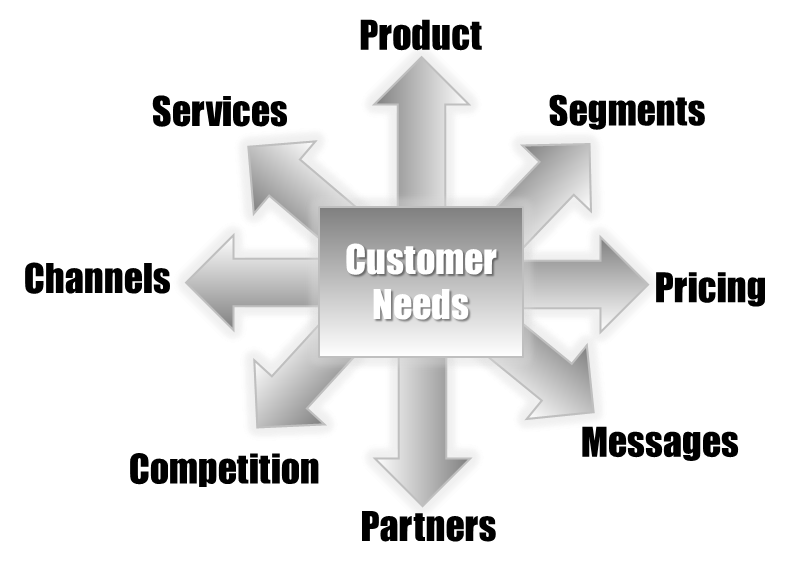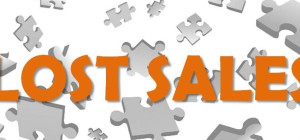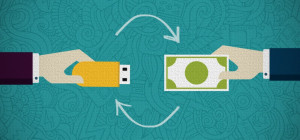 It may sound like an exercise in splitting hairs. What is the big difference whether you use the word goals or needs? The answer is “plenty” when value-driven sales are at stake. It is more than just a question of semantics when you focus on goals and not needs. Goals motivate you to think first like customers; needs encourage you to think mostly like, well, products. It is the difference between you selling features or customers buying value. Goals and needs are not interchangeable terms or concepts.
It may sound like an exercise in splitting hairs. What is the big difference whether you use the word goals or needs? The answer is “plenty” when value-driven sales are at stake. It is more than just a question of semantics when you focus on goals and not needs. Goals motivate you to think first like customers; needs encourage you to think mostly like, well, products. It is the difference between you selling features or customers buying value. Goals and needs are not interchangeable terms or concepts.
In selling, these terms are diametrically opposed. As a point of interest, in the top-selling book of synonyms (talk about great vacation reading), The Synonym Finder, the word goal is not listed as a synonym for needsand vice versa. This probably explains why no one ever refers to needs-satisfaction selling as goals-satisfaction selling. You cannot help but think of needs-satisfaction as being a submissive mindset. Are you really in sales to satisfy needs the way Barbara Eden did in the TV show I Dream of Jeannie (“Your wish is my command, Master”)? The answer is an emphatic no. Again, you are in sales to exceed customers’ expectations and to receive higher profits for doing so.
According to Funk & Wagnalls dictionary, the word need means “to have urgent or essential use for [something lacking].” This definition implies that customers are urgently aware that something needs fixing. Because most people are urgently aware of pain, it is easy to understand why most sales methods equate needs with pain. For salespeople, the words needs and pain are interchangeable.
Therefore, a popular sales strategy is to ask customers, “What hurts or keeps you up at night?” in order to uncover their pain and then focus on remedying it. This strategy works on a simple principle: The greater the pain, the greater the urgency, and the bigger the sales opportunity. When you focus on pain, the logic behind the ease of selling water hoses to people with houses on fire is beyond dispute. Yet, not every customer’s house is on fire; and you do not always have water hoses to sell. When you focus on needs, avoidable problems arise.
These problems arise because needs are very specific. Customers think they have a good idea of what they “need” to remedy their pain. Again, people with houses on fire know they need a water hose. Customers with evident pain make sure you—along with every other competitor they can remember—have ample opportunity to satisfy their needs. They need delivery dates and prices to compare so that they can find the cheapest prices and the fastest deliveries. You are now in a reactive, not a proactive selling mode. You are responding to specific and out-of-the-blue requests. It is difficult to build value when specific requests force you to join the crowd that competes on price and delivery.
These requests can be excellent sales opportunities if you have the exact products customers think they need. If they match, you just won the “needs lottery.” Lady Luck is smiling on you. You might want to walk home and look for lost wallets along the way. More than likely, your products are not exactly what they had in mind. You end up trying to convince customers you have better products than the ones they and competitors are proposing. The features start flying, and besides finding yourself in the middle of bidding wars, another problem surfaces.
A narrow focus on needs also weakens one of your greatest strengths. You limit your expertise as a problem solver. When in an emergency or urgent pain, customers do not consider all the alternatives you could recommend out of experience. Their purchasing decisions revolve solely around quickest delivery dates. At this point, all products look like commodities; another reason why they want more than one supplier bidding on the sale. Understandably, customers discount long-term benefits when they focus on short-term emergencies.
Another difficult selling situation arises during emergencies even when customers are choosing your products. When you think better remedies exist, you gently try to “unsell” customers on their current (and deficient) product choices. However, you are careful to point out that if these new products you suggest do not interest them, you will gladly furnish them with a quote on their requests. With that vote of confidence, it is not surprising that you encounter resistance.
When you reach the point at which you might be jeopardizing your sale, understandably you stop. You resign yourself to a strategy based on thinking that “I tried. Now it’s time to give customers what they think they need.” No one wants to lose a sale. However, you are taking a big risk if the customer’s poor selections do not fulfill his or her unclear goals. You might incur the blame, unless you think most customers blame themselves when the products they insisted on buying do not help them the way they thought.
Example
Janice L., a manufacturing manager, has an old piece of production equipment and wants to make sure that if it breaks she has spare parts on-site. She calls the manufacturer and tells the salesperson, Robert F., she needs a redundant motor and gear set in case of breakdowns. Robert, with his customers’ best interests at heart, wants to make sure Janice does not waste money on obsolete equipment. He knows that his newest machinery product line has 40 percent more production capability than her current unit. He can easily justify the price differences to her between a new, state-of-the-art machine and these two spare parts. A new machine will pay for itself in less than eighteen months.
Robert feels he knows exactly what Janice needs—a new piece of equipment. He starts to explain to Janice the significant difference in production output between the new models and her obsolete one. Janice tells Robert all she needs right now is a proposal for these components. She will talk about buying a new machine when things slow down. Though everyone’s intentions are good, everybody loses. Janice misses an opportunity to spend her money more efficiently; Robert misses an opportunity to sell Janice a better solution. What went wrong?
Everyone equated needs with products. Janice felt she needed spare parts, Robert felt he needed to supply new equipment. He tried to sell his product on the payback resulting from improving production capabilities by 40 percent.
A more effective way to approach this sales situation would be to use the following steps:
- Robert focuses first on Janice’s goal of preventing breakdowns, rather than on the production differences between her machine and a new one.
- He asks her how she feels a spare motor and gear set will help her prevent breakdowns.
- Taking into consideration her answers, he explains how features of the new equipment help prevent breakdowns measurably better—that is, new diagnostics warn of impending problems before they occur so that the customer can take corrective actions, typically saving two hours of downtime.
- Once Janice agrees that these are benefits, Robert can point out the additional financial benefits to be gained by increasing production capabilities. Secondary features and benefits increase value only after customers achieve their primary goals.
When you focus on needs, another problem arises. You miss sales opportunities because even people who are not in pain can have their lives improved—and there are more healthy people than sick people. Customers with no obvious pain often feel there are no opportunities to improve their situation. Salespeople who are pain magnets miss these opportunities to unleash hidden value.
These sentiments often arise when customers are unaware of new technological advances. For instance, think of the first time customers using carbon paper were introduced to copier machines. Talk about the goal of improving productivity in ways yet unknown. A more recent example is wireless technology. The majority of Internet customers are satisfied (no pain) communicating via telephone connections. They might not know how wireless products without the need for phone connections might help them improve their communications.
Finally, when you sell to needs, you give customers more credit than they deserve or want. While customers are always right about where they want to end up (goals); they are not always right on the best way to get there (products). This is where you excel. When you make sure customers always evaluate products in terms of achieving their goals, you reduce the potential for disappointments.







